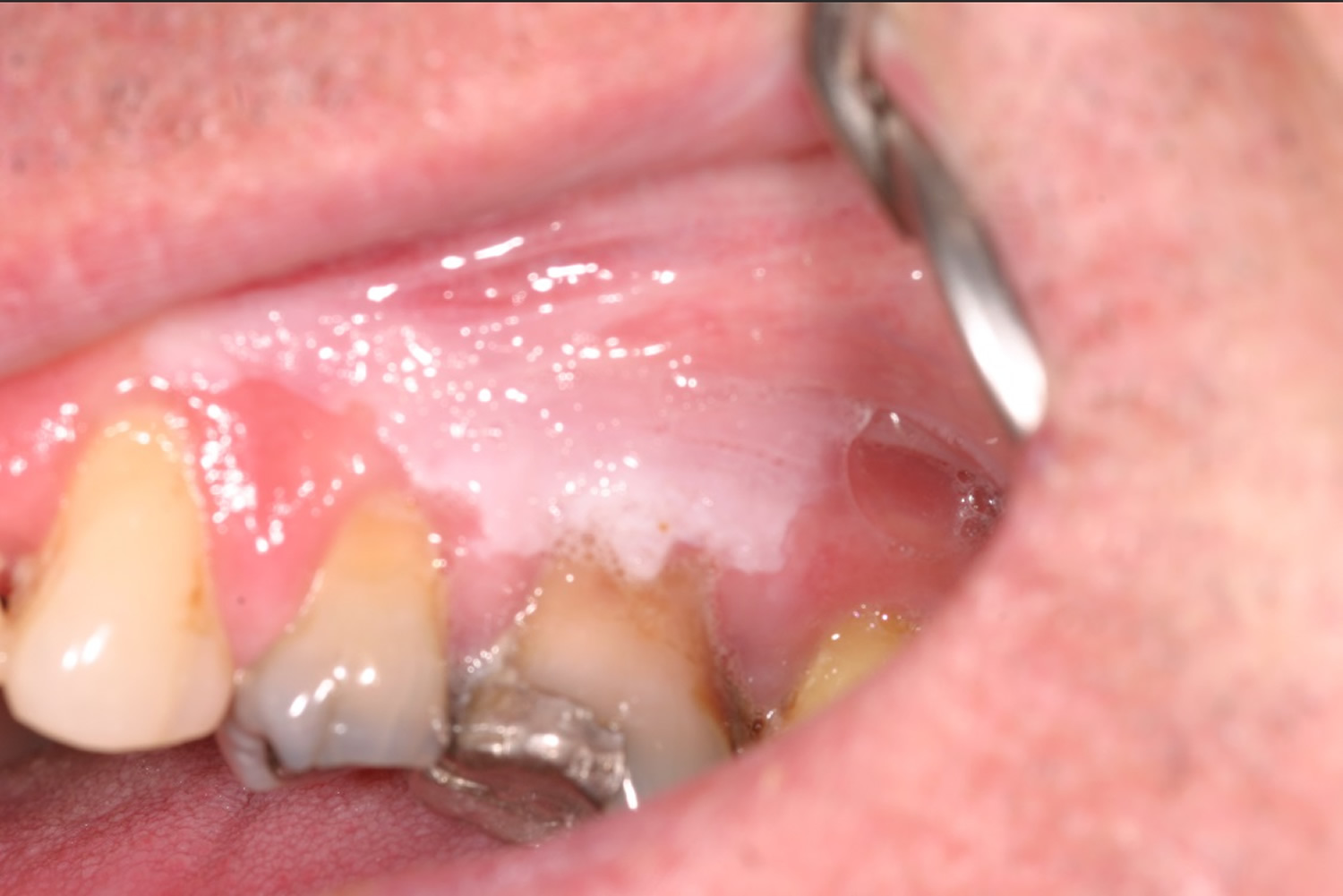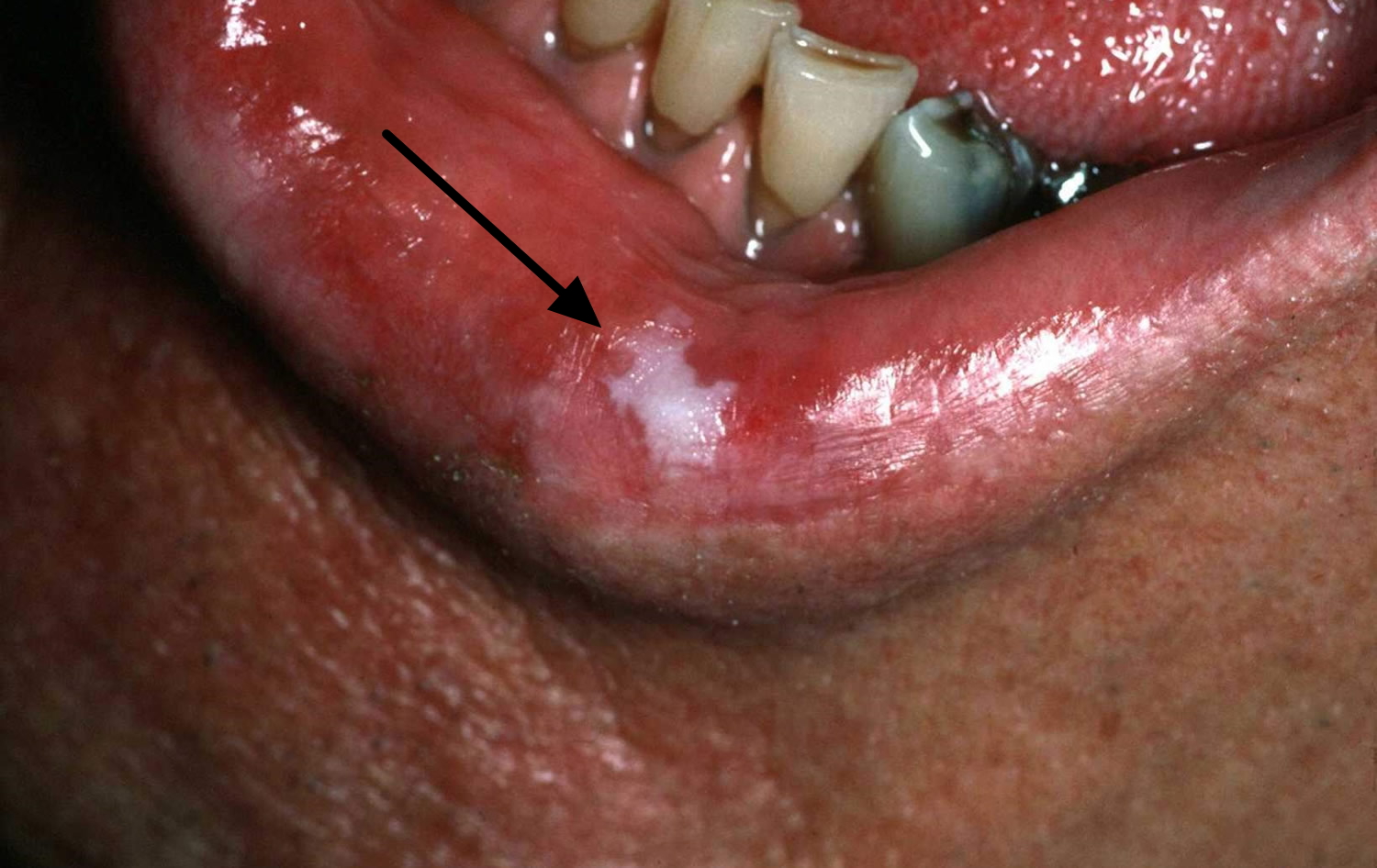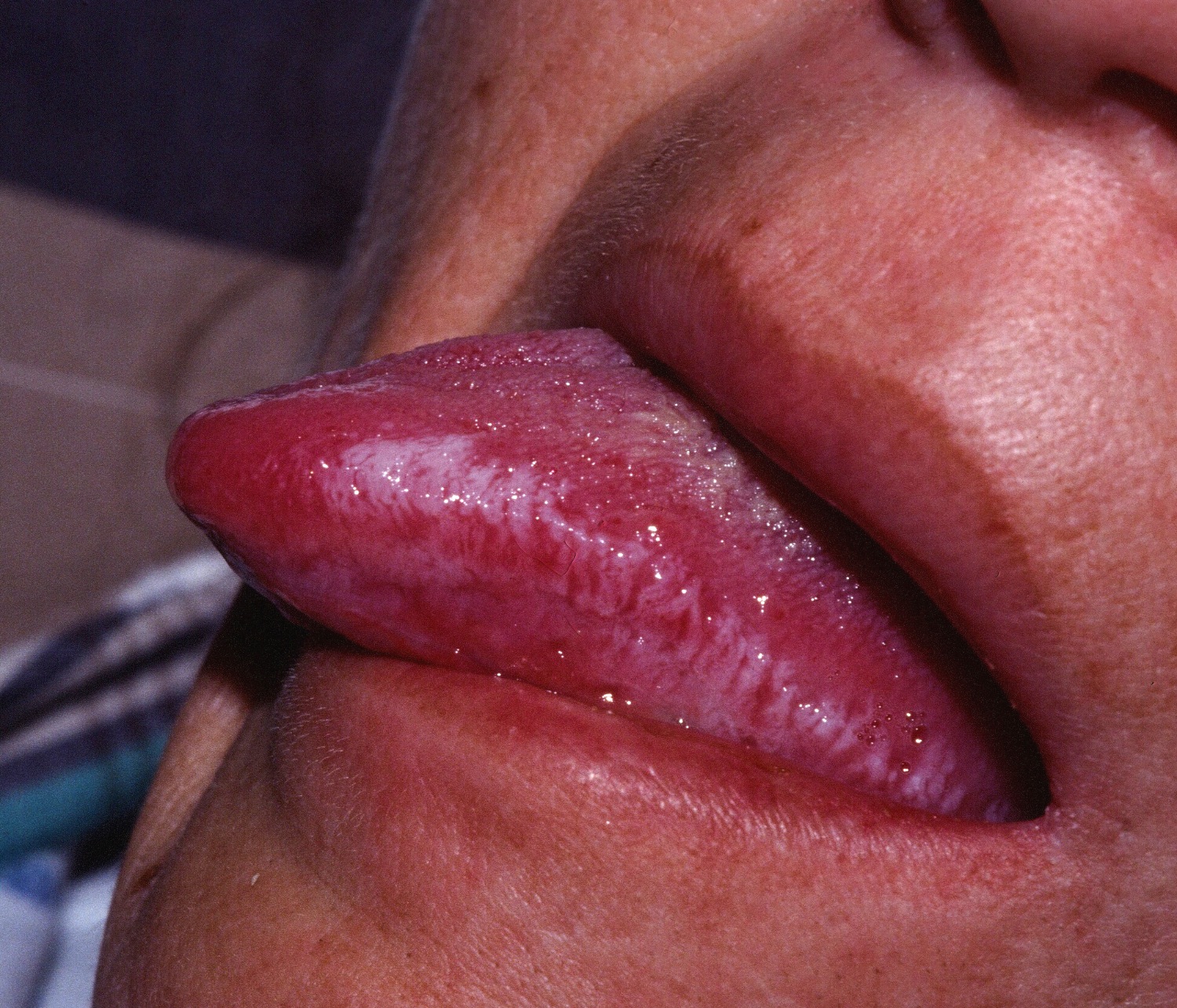Contents
What is leukoplakia
Leukoplakia is a thickened white patch on the tongue, in the mouth, or on the inside of the cheek that can’t be scraped off. Leukoplakia is also called smoker’s keratosis. In the US, leukoplakia is mostly caused by smoking or chronic irritation from tobacco — whether smoked, dipped or chewed. But sometimes the exact cause isn’t known. Leukoplakia is usually harmless. Leukoplakia in the mouth often clear up in a few weeks or months after the source of irritation is removed.
In some cases, leukoplakia may be an early sign of cancer. If you have a white patch in your mouth that doesn’t go away in 2 weeks, get it checked by a dentist or doctor. A white patch on your tongue could also be due to a weakened immune system – for example, you have HIV or have had an organ transplant. A biopsy of the lesion is needed to confirm the diagnosis. Examination of the biopsy may find changes that indicate mouth cancer.
Leukoplakia signs and symptoms:
- aren’t painful
- are an irregular shape
- are slightly raised
- may be slightly red within the patch
- can’t be rubbed or scraped away (patches that can be removed could be oral thrush)
There are also a number of other causes of white patches on the tongue.
If you have leukoplakia there’s a small risk that it could progress to mouth cancer over time. This is why it’s very important to see your dentist or doctor if you have a white patch in your mouth.
- A white patch in your mouth that hasn’t gone away after 2 weeks
- A white patch on your tongue and a weakened immune system – for example, you have HIV or have had an organ transplant
- Lumps or white, red or dark patches in your mouth
- Persistent changes in the tissues of your mouth
- Ear pain when swallowing
- Progressive reduction in the ability to open your jaw
Hairy leukoplakia isn’t likely to lead to cancer. But it may indicate HIV/AIDS.
Figure 1. Leukoplakia gums
Note: Leukoplakia appears as thick, white patches on the inside surfaces of your mouth. Although leukoplakia itself isn’t dangerous, it sometimes shows precancerous changes that can lead to mouth cancer.
Figure 2. Leukoplakia
Figure 3. Oral leukoplakia (lower lip)
Hairy leukoplakia
Hairy leukoplakia or oral hairy leukoplakia is a type of leukoplakia caused by the Epstein-Barr virus. It often affects people with a weakened immune system, particularly those with HIV and AIDS or who have had an organ transplant and are taking immunosuppressant medication.
Hairy leukoplakia causes fuzzy, white patches that resemble folds or ridges, usually on the sides of your tongue. It’s often mistaken for oral thrush, an infection marked by creamy white patches that can be wiped away, which is also common in people with a weakened immune system. They aren’t painful and can’t be brushed or scraped away.
Antiviral medications, or treatments applied directly to the patch, may be prescribed to treat hairy leukoplakia.
Unlike other types of leukoplakia, hairy leukoplakia doesn’t carry a risk of mouth cancer.
Figure 4. Leukoplakia tongue (oral hairy leukoplakia)
Leukoplakia causes
Leukoplakia affects the mucous membrane of the mouth. Although the cause of leukoplakia is unknown, chronic irritation, such as from tobacco use, including smoking and chewing, appears to be responsible for most cases. It may be due to irritation such as:
- Rough teeth
- Rough places on dentures, fillings, and crowns
- Smoking or other tobacco use (smoker’s keratosis), especially pipes
- Holding chewing tobacco or snuff in the mouth for a long period of time
- Drinking a lot of alcohol
The disorder is most common in older adults. Often, regular users of smokeless tobacco products eventually develop leukoplakia where they hold the tobacco against their cheeks.
A type of leukoplakia of the mouth, called oral hairy leukoplakia, is caused by the Epstein-Barr virus. It is seen mostly in persons with HIV/AIDS. It may be one of the first signs of HIV infection. Oral hairy leukoplakia can also appear in other people whose immune system is not working well, such as after a bone marrow transplant.
Risk factors for leukoplakia
Tobacco use, particularly smokeless tobacco, puts you at high risk of leukoplakia and oral cancer. Long-term alcohol use increases your risk, and drinking alcohol combined with smoking increases your risk even more.
Hairy leukoplakia
People with HIV/AIDS are especially likely to develop hairy leukoplakia. Although the use of antiretroviral drugs has reduced the number of cases, hairy leukoplakia still affects a number of HIV-positive people, and it may be one of the first signs of HIV infection.
Leukoplakia prevention
In the US, leukoplakia is mostly caused by smoking.
- Stop smoking or using other tobacco products.
- Do not drink alcohol, or limit the number of drinks you have.
- Have rough teeth treated and dental appliances repaired right away.
- Don’t chew tobacco, paan or betel nuts
- Keep your mouth and teeth healthy by practising good oral hygiene.
- Have regular dental check-ups
- If you wear dentures, make sure they fit properly
- Eat a balanced diet, including plenty of fresh fruit and vegetables
Leukoplakia symptoms
Leukoplakia usually occurs on your gums, the insides of your cheeks, the bottom of your mouth — beneath the tongue — and, sometimes, your tongue. It isn’t usually painful and may go unnoticed for a while.
Leukoplakia may appear:
- Most often white or gray patches that can’t be wiped away
- Uneven in shape
- Fuzzy (oral hairy leukoplakia)
- Slightly raised, with a hard surface
- Unable to be scraped off
- Painful when the mouth patches come into contact with acidic or spicy food
Leukoplakia diagnosis
Most often, your doctor diagnoses leukoplakia by:
- Examining the patches in your mouth
- Attempting to wipe off the white patches
- Discussing your medical history and risk factors
- Ruling out other possible causes
Testing for cancer
If you have leukoplakia, your doctor will likely test for early signs of cancer by:
- Oral brush biopsy. This involves removing cells from the surface of the lesion with a small, spinning brush. This is a non-invasive procedure, but does not always result in a definitive diagnosis.
- Excisional biopsy. This involves surgically removing tissue from the leukoplakia patch or removing the entire patch if it’s small. An excision biopsy is more comprehensive and usually results in a definitive diagnosis.
If the biopsy is positive for cancer and your doctor performed an excisional biopsy that removed the entire leukoplakia patch, you may not need further treatment. If the patch is large, you may be referred to an oral surgeon or ear, nose and throat (ENT) specialist for treatment.
Hairy leukoplakia
If you have hairy leukoplakia, you’ll likely be evaluated for conditions that may contribute to a weakened immune system.
Leukoplakia treatment
Treatment for leukoplakia isn’t always needed but you’ll have regular check-ups to make sure the patch isn’t getting bigger.
Leukoplakia may get smaller or go away if you:
- Treat dental causes such as rough teeth, irregular denture surface, or fillings as soon as possible.
- Stop smoking or using other tobacco products.
- Do not drink alcohol.
The goal of treatment is to get rid of the leukoplakia patch. Removing the source of irritation may cause the patch to disappear. Even after leukoplakia patches are removed, the risk of oral cancer remains.
If removing the source of the irritation does not work, your health care provider may suggest applying medicine to the patch or using surgery to remove it.
An operation is sometimes needed to remove the patch if there’s a risk it could become cancerous.
This may be done while the area is numbed (local anesthetic) or while you’re asleep (general anesthetic).
The patch can be removed in a number of ways, including using a laser, a surgical scalpel or an extremely cold probe that freezes and destroys cancer cells (cryoprobe). Your mouth should heal quickly afterwards.
- Follow-up visits to check the area. Once you’ve had leukoplakia, recurrences are common.
Treating hairy leukoplakia
Usually, you don’t need treatment for hairy leukoplakia. The condition often causes no symptoms and isn’t likely to lead to mouth cancer.
For oral hairy leukoplakia, taking antiviral medicine usually causes the patch to disappear. Your doctor may also suggest applying medicine to the patch.
If your doctor recommends treatment, it may include:
- Medication. You may take a pill that affects your whole system (systemic medication), such as antiviral medications. These medications can suppress the
- Epstein-Barr virus, the cause of hairy leukoplakia. Topical treatment may also be used.
- Follow-up visits. Once you stop treatment, the white patches of hairy leukoplakia may return. Your doctor may recommend regular follow-up visits to monitor changes to your mouth or ongoing therapy to prevent leukoplakia patches from returning.









